Enter now to win a copy of
Iron Women: The Ladies Who Helped Build the Railroad
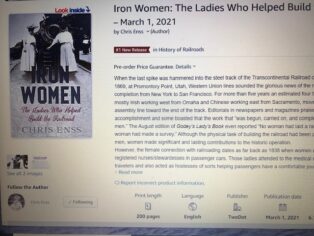
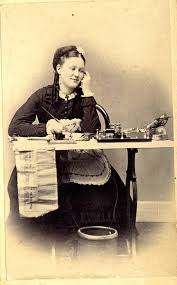
Twenty-eight-year-old Elizabeth Cogley sat at a small desk in the Pennsylvania Railroad ticket office in Lewiston Junction, Pennsylvania, on April 16, 1861, frantically writing down the message coming through the telegraph. The neatly dressed woman wore a serious expression; the message she was transcribing was vital and history making. The day before, a similar wire had reached Elizabeth. She carefully noted its contents and passed it along to the ranking military official in the area. It was from President Abraham Lincoln, and it read, “I appeal to all loyal citizens to favor, facilitate, and aid this effort to maintain the honor, the integrity, and the existence of our National Union, and the perpetuity of popular government; and to redress the wrongs already long enough endured.” This was Lincoln’s first call for troops. He asked for 75,000 volunteers.
The following day, Pennsylvania’s first war governor, Andrew G. Curtin, sent a telegram to Captain Selheimer, commander of the First Defenders Association in Lewiston, to rally his men together to report to Harrisburg, Pennsylvania, as soon as possible. After delivering the message to the captain, Elizabeth was instructed to respond to Governor Curtin with news that he and his troops would “move at once.” The railroad telegrapher dispatched the important information quickly and accurately. Little did Elizabeth know the event would be remembered as the first telegraph exchange of the Civil War.
Born on November 24, 1833, Elizabeth learned telegraphy in the office of the National Telegraph Company. She entered the service of the Pennsylvania Railroad Company on April 13, 1856. She was stationed in the Lewiston office until the beginning of the Civil War. She remained with the railroad company for more than forty years.
Some of the earliest women in railroading can be found in telegraph stations. The job of the telegrapher was to transfer information between the train dispatcher and the train operator. A telegrapher copied train orders and messages from the train crew and reported the passing trains to the dispatcher. They also received and sent Western Union telegrams. Most learned the trade from another operator. Some attended schools such as the Cooper Union for the Advancement of Science and Art in New York and the Pittsburgh Female College in Pittsburgh.
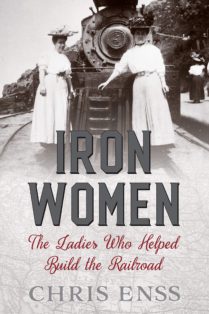

Iron Women examines women who contributed to the rise of the railroads. The chapters cover inventors, writers, bosses, and the infamous Harvey Girls. Women played an integral part in making the railroads a significant factor in US history. The chapter I find the most interesting was the one on the Harvey Girls. I had a vague idea who they were, but I had no idea it was a chain of restaurants and hotels along the southwest that gave jobs to thousands of women from the 1890s-1930s. This book adds to women’s history and industrial history genres. Goodreads Review
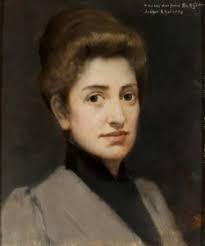
The sun blazed high in a brassy sky, and heat danced in undulating waves across the high plateau town of Winslow, Arizona. In the far distance, a train with the name Santa Fe Railway embossed on its side hurried along steel rails toward the La Posada Hotel. It was May 15, 1930, opening day for the newest link in the chain of Fred Harvey hotels found along the Santa Fe line between Chicago and the Pacific Coast.
The main lobby of the grand establishment was crowded with local and state politicians, Native Americans, businessmen and their wives, enthusiastic patrons, and, of course Harvey Girls, those dedicated women who worked as wait staff at restaurants and hotels from Kansas to California. Among those celebrating the launch of La Posada was its architect, Mary Colter. The sixty-two-year-old designer beamed with pride as she surveyed the rambling earth tinted structure. Inspired by the great ranchos of old Mexico, the hotel was the embodiment of simplicity, spacious comfort and colorful interest, characteristic of early Spanish craftmanship.
One of Mary’s friends handed her a glass of champagne to toast the event, but, before she could raise her glass, a pair of rowdy, well-dressed cowboys on horseback burst into the entrance of the magnificent vestibule. One of the exuberant men rode over to Mary, hopped off his horse, scooped her up in her arms, and placed her on the check-in counter. The two cowboys celebrated Mary’s accomplishment by firing their guns into the air. Before the gathering had a chance to fully process the actions of the joyful pair, the cowboys quickly walked their horses out of the hotel.
Mary Elizabeth Jane Colter’s business relationship with Fred Harvey, the hotelier, restauranteur and retailer, and the Santa Fe Railway lasted more than forty years. The gifted architect and designer created numerous, large scale projects for the Harvey Company and the rail line. All of which helped promote both businesses and made train travel pleasurable for those heading west.

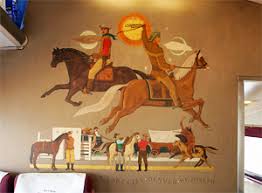
While attending college in Pennsylvania, Mary Lawser was part of a group comprised of several accomplished female artists. They were known as the Philadelphia Ten.
Among the members was a talented painter and sculptor named Mary Louise Lawser. Like Mary Colter, Mary Lawser was hired by a major rail line company to help promote westward travel.
Born in 1906 in Pennsylvania, she exhibited at a young age. She attended the Pennsylvania Museum School, the Pennsylvania Academy of Fine Arts, and the Ecole des Beaux Arts in Paris. Mary’s work was exhibited in galleries in Europe and New York. She was recognized by her peers as a gifted, bronze work artist. After graduation she took a position as an art instructor at Cedar Crest College in Allentown, Pennsylvania, and at Bryn Mawr.
In early 1940, she was hired to work for notable architect Paul Cret. The French-born, Philadelphia architect and industrial designer was impressed with Mary’s design and execution of bronze tablets found inside Alexander Hamilton’s home, The Grange. Commissioned by the American and Historic Preservation Society, the tablets were made to honor Alexander Hamilton, first secretary of the United States treasury. In addition to designing buildings on the University of Texas campus and the Pan American Union Building in Washington, D.C., Paul Cret designed railroad cars for the Burlington and Santa Fe rail lines. While Mary was employed by Cret, she contributed to decorating various railroad passenger cars with sculptures, wood carving, and mixed metal creations.
When Cret passed away in 1945, Mary was hired by another respected Pennsylvania architect, John Harbeson, to aid him in creating a new look for Burlington’s Pioneer Zephyr. Although in the employ of Harbeson, Mary was singled out by the Budd Company, a railroad industry manufacturer, to design murals for the interior of the passenger cars that would inspire ticket-buyers to go west.

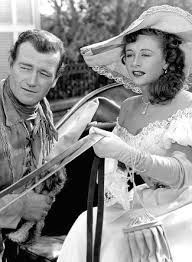
The most influential woman at Republic Pictures from the early 1940s to the studio’s demise in the early 1960s, was Vera Hruba. Born in Prague, Czechoslovakia, on July 12, 1919, the blonde beauty caught Republic Picture’s president Herbert Yates’ attention in 1939 when she toured the United States with an ice-skating show called Ice Vanities.
Vera was an exceptional ice skater, having placed 17th in the 1936 Olympics behind figure skater Sonja Henie. Yates was captivated with Vera’s talent and looks and believed she could be as successful as Ms. Henie who was one of the leading stars at 20th Century Fox. He cast Vera, and the entire company of the Ice Vanities, in a musical film entitled The Ice Capades. Critics called the picture “sheer enchantment on ice.” Vera was mentioned along with five other skaters as “spectacular”. Yates couldn’t have agreed more and in 1943 signed her to a long-term contract with the studio and added Ralston to her name. He added Ralston, a name borrowed from the cereal, because Hruba was difficult for moviegoers to pronounce.
The first movie Vera Hruba Ralston appeared as a star, minus the skates, was Republic Pictures’ 1941 horror film The Lady and the Monster. Her costars were Erich von Stroheim and Richard Arlen. Billed as “a picture from out of this world” the plot involves a millionaire whose brain is preserved after his death, and telepathically begins to take control of those around him. Von Stroheim portrays the diabolical Dr. Mueller who retrieves the brain of a financial genius who crashed to his death in an airplane mishap near the laboratory. The doctor carries out a fiendish plot to put the super brain to work for him. Richard Arlen plays the doctor’s assistant who falls in love with the doctor’s ward, Vera Ralston. The film reviewer for the Havre Daily News referred to Ralston’s debut as a dramatic actress as “the find of the season.”
Most did not agree with the critics who found the foreign ingénue to be a promising star. Many complained that her performance was wooden and that her accent was too thick. Yates ignored every voice but his own and quickly reteamed von Stroheim and Arlen with his discovery in another feature entitled Storm Over Lisbon. In this spy thriller Ralston played an allied operative in Lisbon and Arlen an American newspaper man who she helps get out of Portugal with important information. Audiences found Ralston attractive, but struggled to understand what she was saying.
Yates hired acting instructors and speech coaches for Ralston. While her English and her acting soon improved she could not lose her strong Czech accent. Yates felt that ticket buyers would eventually see how compelling the stunning blonde’s talent truly was and learn to embrace her way of talking in much the same way they did Marlene Dietrich. In order to help Ralston, gain a broader acceptance he paired her with an actor that had mass appeal – John Wayne.
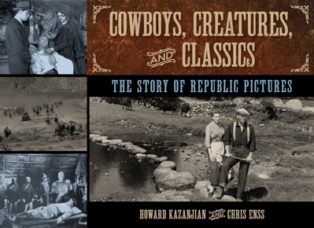

Take one well-oiled effective killing machine, add a familiar hero on the ground, in the air, and on horseback; stir in a ghastly end that’s surely impossible to escape, add action, add passion, made on a shoestring budget at breakneck speed, and you’ve got the recipe for Republic Pictures. Who, after all, cannot forget The Atomic Kid, starring Mickey Rooney, or The Untamed Heiress, with an un-Oscar-worthy performance by ingénue Judy Canova?
Exploding onto the movie scene in 1935, Republic Pictures brought the pop culture of the 30s and 40s to neighborhood movie houses. Week after week kids sank into their matinee seats to soak up the Golden Age of the Republic series, to ride off into the classic American West. And they gave us visions of the future. Visions that inspire film makers today. Republic was a studio that dollar for dollar packed more movie onto the screen than the majors could believe. From sunrise on into the night over grueling six-day weeks, no matter how much mayhem movie makers were called upon to produce, at Republic Pictures it was all in a day’s work.
Republic Pictures was the little studio in the San Fernando Valley where movies were made family style. A core of technicians, directors, and actors worked hard at their craft as Republic released a staggering total of more than a thousand films through the late 1950s.
Republic Pictures was home to John Wayne for thirty-three films. Always inventing, Republic brought a song to the West. It featured the West’s first singing cowboy. Republic brought action, adventure, and escape to neighborhood movies houses across America. And they brought it with style. Scene from westerns such as The Three Mesquiteers and the Lawless Range gave screaming kids at the bijou a white-knuckle display of expert film making.
Republic Pictures became a studio where major directors could bring their personal vision to the screen. Sometimes these were projects no other studio would touch such as The Quiet Man (which brought director John Ford an Oscar) and Macbeth.
Killer Bs, Cowboys, Creatures and Classics: The Story of Republic Pictures is for anyone who likes B movies magic. It is the honest account of an extraordinary production house, one whose ability to turn out films quickly boded well for its transition into television production. Not only were its sets used for such shows as Leave it to Beaver and Gilligan’s Island, but stock footage from Republic’s movies was also used on such shows as Gunsmoke and The Life and Legend of Wyatt Earp.
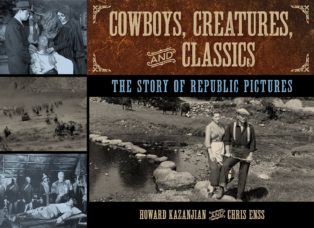
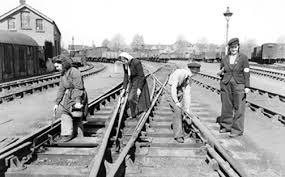
By the beginning of the nineteenth century, with independence won and the Indians largely subdued, the great tide of western movement across the North American continent was gaining momentum. One of the first railroad lines that transported people from the East to the West was the Baltimore and Ohio Railroad. Construction on the Baltimore and Ohio Railroad began in July 1828, and the first stretch of rails was completed in 1830. More than ninety years later, the rail line was still carrying passengers to destinations beyond the Missouri River and still establishing themselves as leaders in the industry. In 1920, Baltimore and Ohio Railroad executives made the bold decision to hire a woman in their engineering department. Not only was Olive Dennis the first female professional engineer hired by the Baltimore and Ohio Railroad, but she was also the first female ever to be hired in that field for a major rail line.
As a child growing up in Baltimore, Olive enjoyed working with tools. She frequently borrowed her father’s tools to disassemble her mechanical toys. Olive was born on November 20, 1885, in Thurlow, Pennsylvania, and at the age of eleven decided to build her own playhouse. She spent days watching the construction of a new home across the street from where she lived and was convinced she could duplicate the work she saw being done. Using recycled wood from an old shed her father had torn down, Olive designed and built a playhouse complete with windows, shutters, doors, and a full porch with stairs.
Olive excelled scholastically, graduating from Western High School with honors and a scholarship to attend Goucher College. She was elected to Phi Beta Kappa there and achieved a Bachelor of Arts degree. From Goucher she went on to Columbia in New York where she received a master’s degree in mathematics. While teaching school in Wisconsin, she decided to study civil engineering at Cornell University. Olive was only the second woman in the school’s history to pursue such a degree.


Although the physical task of building the railroad had been achieved by men, women made significant and lasting contributions to the historic operation. The female connection with railroading dates as far back as 1838 when women were hired as registered nurses/stewardesses in passenger cars. Those ladies attended to the medical needs of travelers and also acted as hostesses of sorts, helping passengers have a comfortable journey.
Susan Morningstar was one of the first women on record employed by a railroad. She and her sister, Catherine Shirley, were hired by the Baltimore and Ohio Railroad in 1855 to keep the interior of the cars clean and orderly. The feminine, homey touches they added to the railroad car’s décor attracted female travelers and transformed the stark, cold interior into a more welcoming setting.
Miss E. F. Sawyer became the first female telegraph operator when she was hired by the Burlington Railroad in Montgomery, Illinois, in 1872. The following year, Union Pacific Railroad executives followed suit by hiring two women to be telegraph operators in Kansas City, Missouri.
Inventress Eliza Murfey focused on the mechanics of the railroad, creating devices for improving the way bearings on the rail wheel attached to train cars responded to the axles. The device, or packing as it was referred to, was used to lubricate the axles and bearings. Murfey held sixteen patents for her 1870 invention.
In 1879, another woman inventor named Mary Elizabeth Walton developed a system that deflected emissions from the smokestacks on railroad locomotives. She was awarded two patents for her pollution reducing device.
A cattle rancher’s daughter, Nancy P. Wilkerson, from Terre Haute, Indiana, created the cattle car in 1881. Using a rack and pinion mechanism, she devised sliding partisans that separated the livestock from the food compartments and water troughs.
